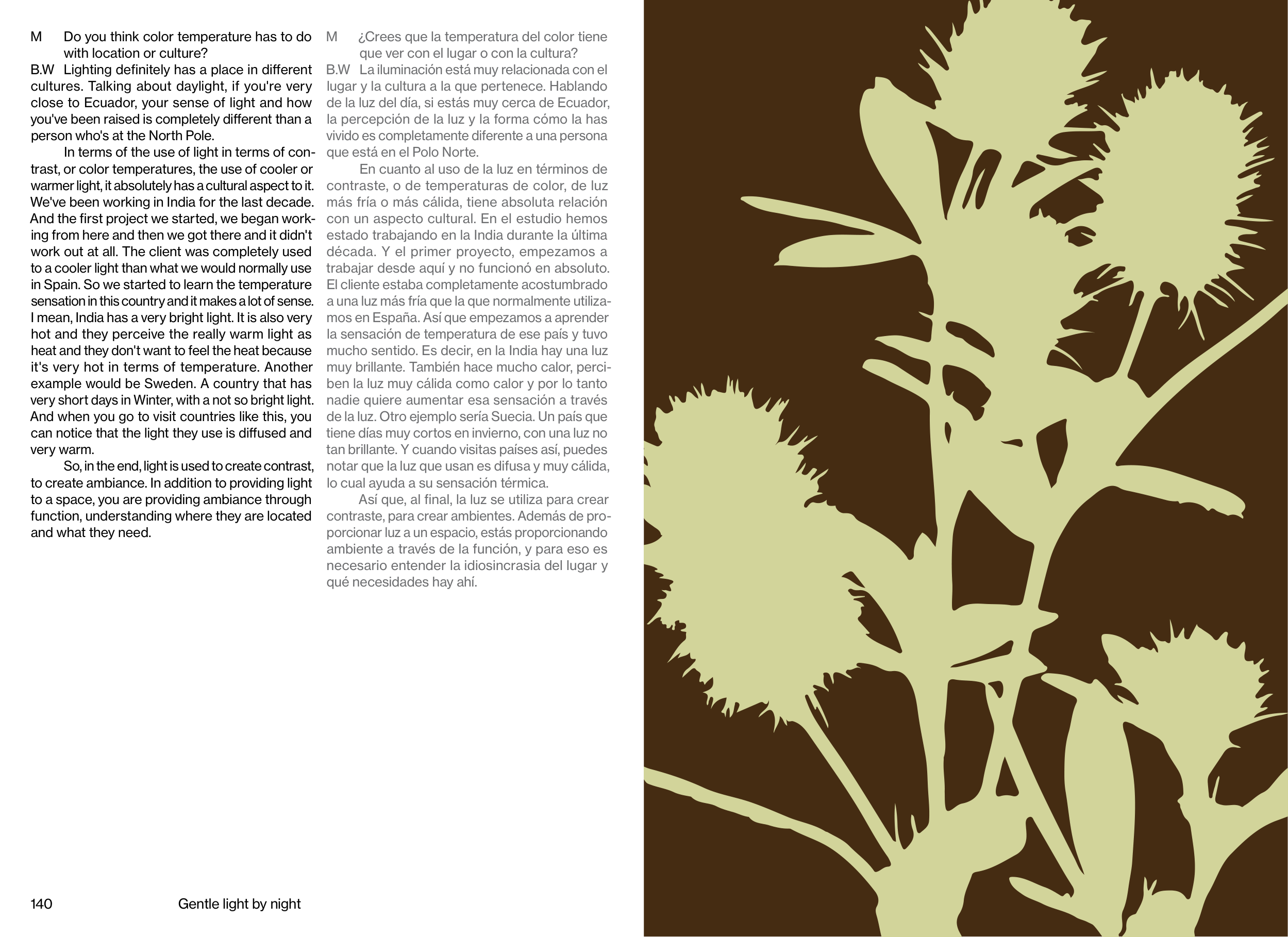Do you think color temperature has to do
with location or culture?
Lighting definitely has a place in different
cultures. Talking about daylight, if you're very
close to Ecuador, your sense of light and how
you've been raised is completely different than a
person who's at the North Pole.
In terms of the use of light in terms of con-
trast, or color temperatures, the use of cooler or
warmer light, it absolutely has a cultural aspect to it.
We've been working in India for the last decade.
And the first project we started, we began work-
ing from here and then we got there and it didn't
work out at all. The client was completely used
to a cooler light than what we would normally use
in Spain. So we started to learn the temperature
sensation in this country and it makes a lot of sense.
I mean, India has a very bright light. It is also very
hot and they perceive the really warm light as
heat and they don't want to feel the heat because
it's very hot in terms of temperature. Another
example would be Sweden. A country that has
very short days in Winter, with a not so bright light.
And when you go to visit countries like this, you
can notice that the light they use is diffused and
very warm.
So, in the end, light is used to create contrast,
to create ambiance. In addition to providing light
to a space, you are providing ambiance through
function, understanding where they are located
and what they need.
¿Crees que la temperatura del color tiene
que ver con el lugar o con la cultura?
La iluminación está muy relacionada con el
lugar y la cultura a la que pertenece. Hablando
de la luz del día, si estás muy cerca de Ecuador,
la percepción de la luz y la forma cómo la has
vivido es completamente diferente a una persona
que está en el Polo Norte.
En cuanto al uso de la luz en términos de
contraste, o de temperaturas de color, de luz
más fría o más cálida, tiene absoluta relación
con un aspecto cultural. En el estudio hemos
estado trabajando en la India durante la última
década. Y el primer proyecto, empezamos a
trabajar desde aquí y no funcionó en absoluto.
El cliente estaba completamente acostumbrado
a una luz más fría que la que normalmente utiliza-
mos en España. Así que empezamos a aprender
la sensación de temperatura de ese país y tuvo
mucho sentido. Es decir, en la India hay una luz
muy brillante. También hace mucho calor, perci-
ben la luz muy cálida como calor y por lo tanto
nadie quiere aumentar esa sensación a través
de la luz. Otro ejemplo sería Suecia. Un país que
tiene días muy cortos en invierno, con una luz no
tan brillante. Y cuando visitas países así, puedes
notar que la luz que usan es difusa y muy cálida,
lo cual ayuda a su sensación térmica.
Así que, al final, la luz se utiliza para crear
contraste, para crear ambientes. Además de pro-
porcionar luz a un espacio, estás proporcionando
ambiente a través de la función, y para eso es
necesario entender la idiosincrasia del lugar y
qué necesidades hay ahí.
Gentle light by night
M
B.W
M
B.W
140


